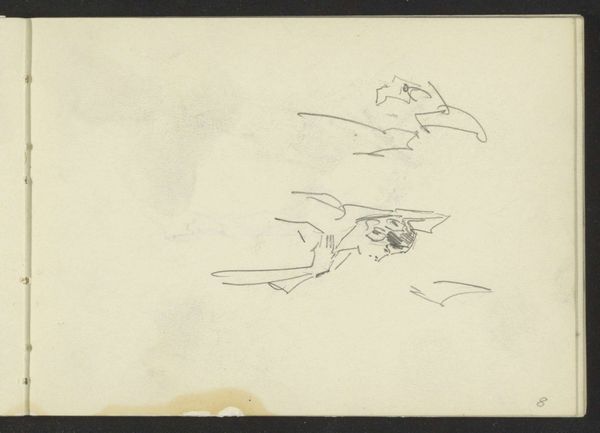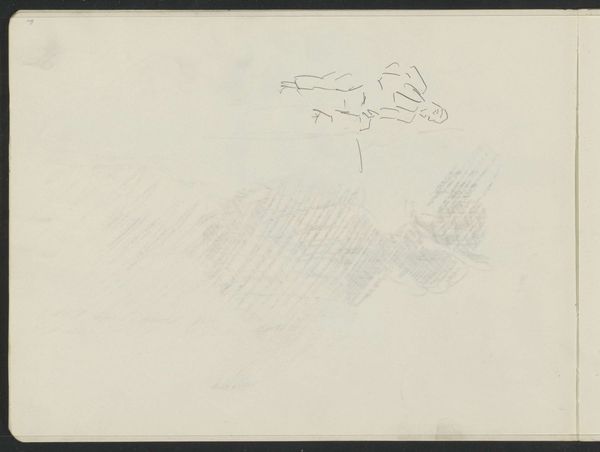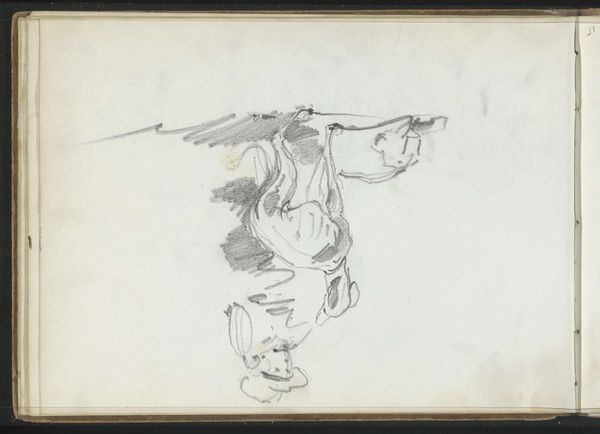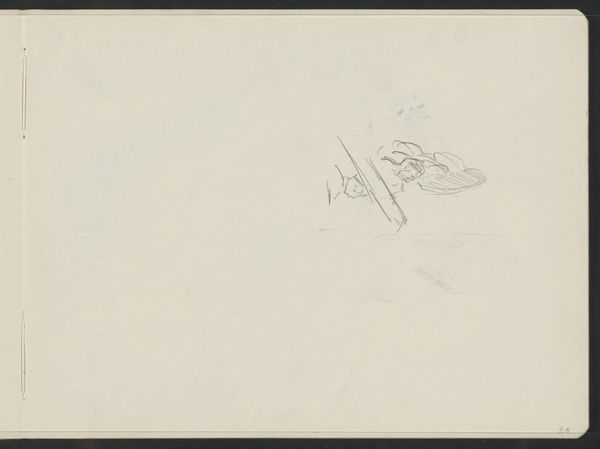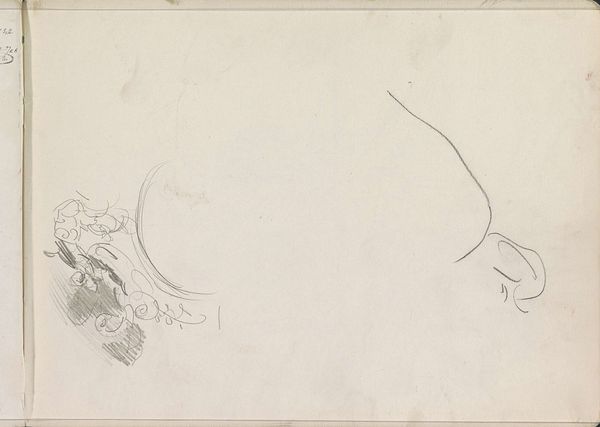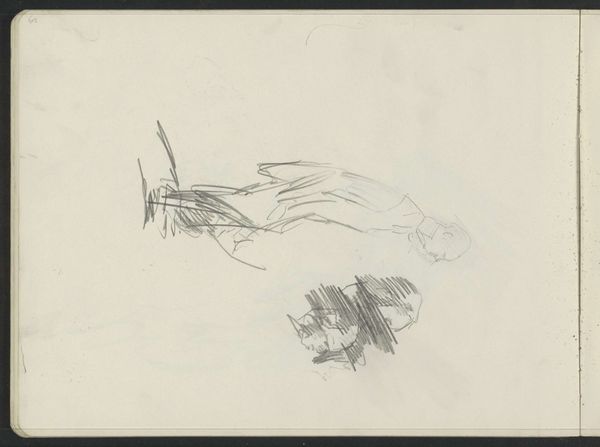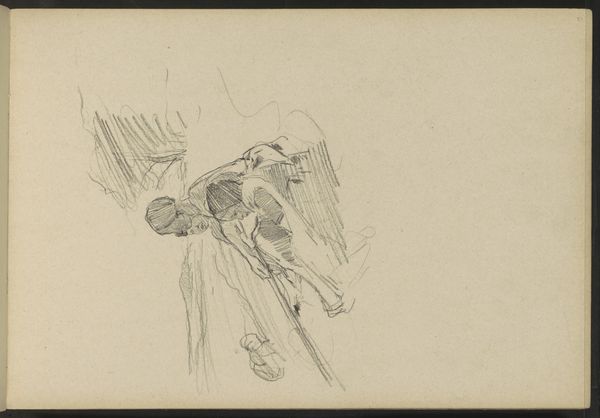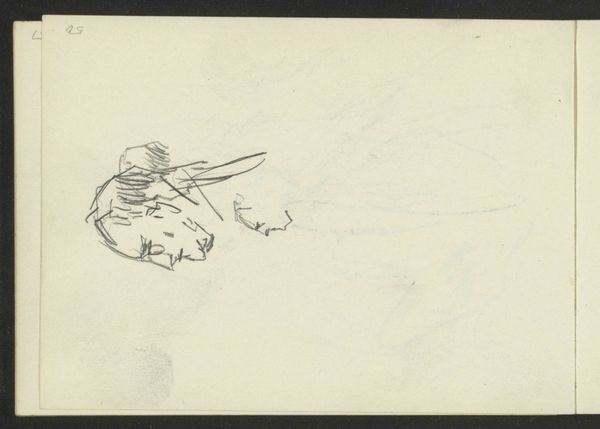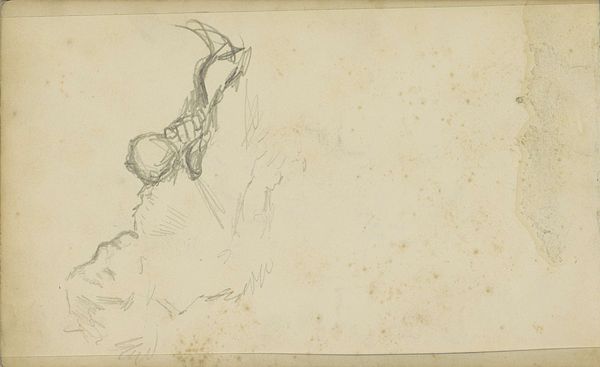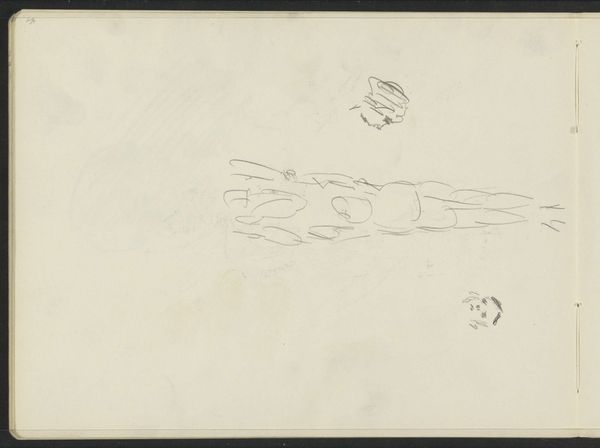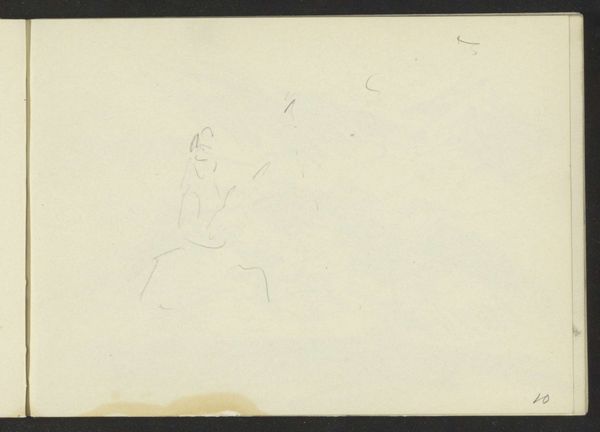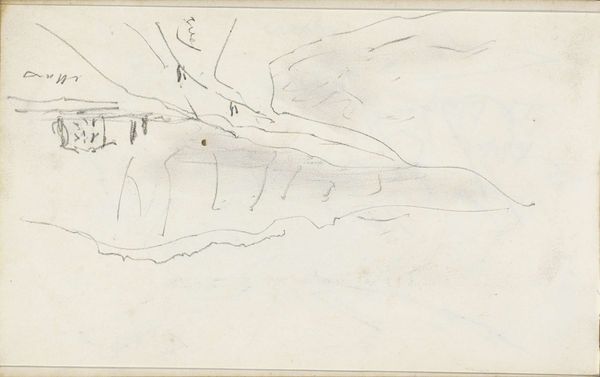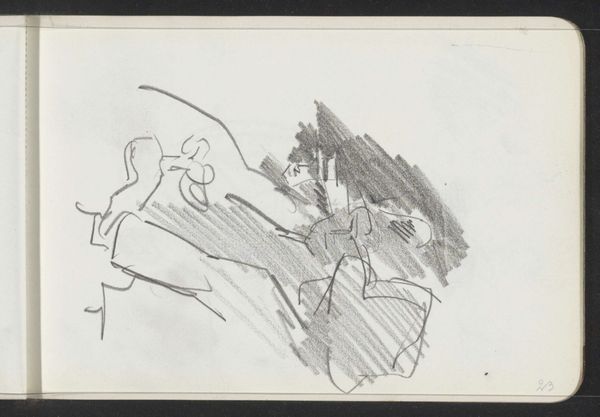
Copyright: Rijks Museum: Open Domain
Editor: Here we have Isaac Israels’ “Woman with Hat,” a graphite, pencil, and frottage drawing on paper, made sometime between 1875 and 1934, currently held at the Rijksmuseum. It looks to me like a quick sketch; the lines are very gestural. What catches your eye in terms of its formal qualities? Curator: Indeed, the sketch’s value lies in the visible, swift hand of the artist. Note how the immediacy of line transcends mere representation. Instead, Israels seems interested in exploring the tension between presence and absence, suggested by the delicate frottage work to create the illusion of shadow. How does the composition draw your attention? Editor: I’m struck by the emptiness of the surrounding space. The figure seems almost isolated despite the hat and implied form, the negative space creates tension. Is that intentional or perhaps just… unfinished? Curator: The composition leverages a contrast, doesn’t it? Observe how the density of the graphite at the lower left gradually dissolves into the bare paper, guiding the eye across the plane. It might seem "unfinished" but I would call that a dialectic between the depicted and the undepicted, the visible and the invisible; this contributes to the dynamic. Now, what assumptions can you derive about Israels, considering these technical strategies? Editor: It reveals his interest in movement, perhaps. Like he's less concerned with perfect likeness and more focused on capturing a fleeting impression of this woman. The visible linework almost suggests multiple perspectives, all at once. Curator: Precisely. Furthermore, this fragmentation mirrors the fractured nature of modern experience, hinting at the destabilization of traditional modes of perception and representation. We appreciate your thoughtful commentary! Editor: Thank you for elaborating; it makes me think about the power of suggestion and incompletion in art.
Comments
No comments
Be the first to comment and join the conversation on the ultimate creative platform.
